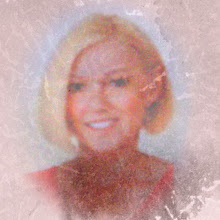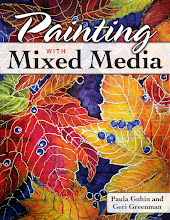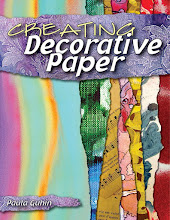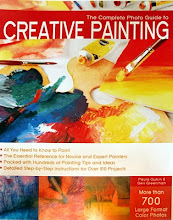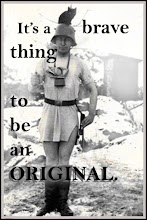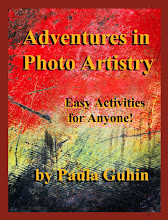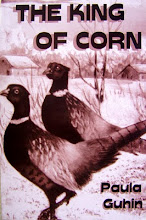A COOL COMBO FOR A MIXED MEDIA ARTWORK
Gauze and modeling paste together add
major texture to any painting.
major texture to any painting.
Sure, there are many other materials you can use for similar effects: crackle paste, sheetrock compound, "molding" paste
or any of the texture pastes.
or any of the texture pastes.
Here I'll show you every step of my method, beginning with a used canvas. (I had collaged and painted an angel, but did not like the finished work.)
1. I gathered two images to add to the piece, and kept the angel. I veiled her thinly with a yellow ochre glaze. The three images balance each other.
 |
| Step 1, veiling and collage. |
2. I added thin glazes of acrylic color to the large figure and the tiny arch at top to blend them in better.
(Please excuse the quality of several of these pix!)
3. I adhered gauze to the canvas (in an arch shape) using acrylic medium, and then let it dry with a weight on top.
 |
| Step 3, with gauze arch. |
4. Next, when the gauze was dry, I scraped modeling paste into it. Let dry thoroughly.
 |
| Still not finished! |
5. Finally, I used thin paints on the dry white arch and also adjusted the red cast. I then accented the entire piece to create contrast...light and dark in places.
 |
| The finished artwork. |
HAPPY NEW YEAR, EVERYONE!


